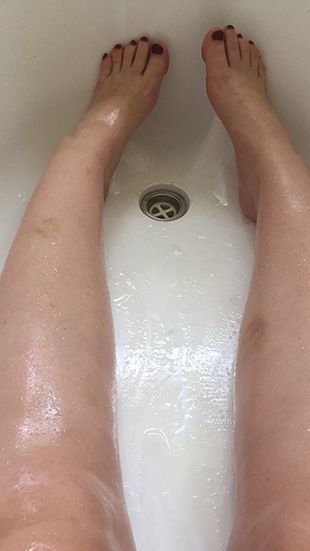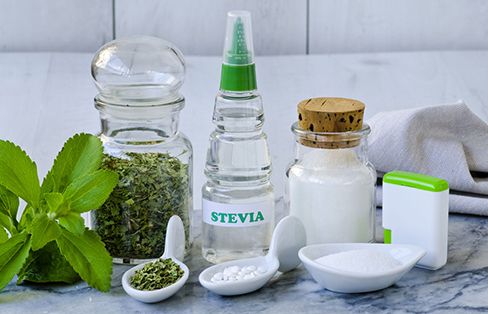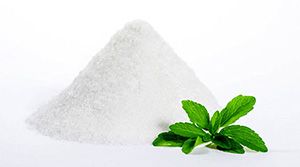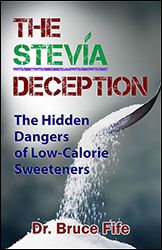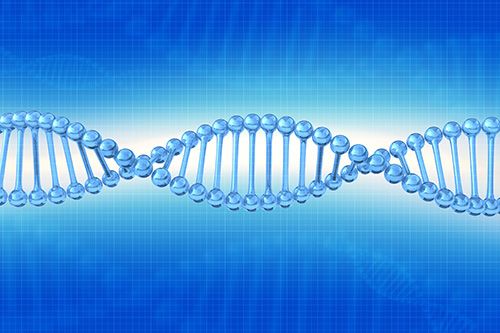This new product was introduced into Japan by a group of enterprising Japanese businessmen in the 1970s. Japan is a world leader in the production and exportation of food additives that include stevia, aspartame, sucralose, acesulfame K, MSG, monoammonium glutamate (MAG), soy protein isolate, hydrolyzed vegetable protein, and others. Japan is the world’s leading producer of aspartame, turning out 14,000 metric tons yearly, about 40 percent of all the aspartame sold worldwide. It is no wonder that they were the first to see the financial potential in purified stevia extract, and to begin marketing it
The fact that the Japanese have been using crystalline stevia powder since the 1970s is cited as proof of its safety. But long-time use of a product does not prove its safety. For example, Japan was also the first country to use and market monosodium glutamate (MSG), a flavor enhancer used in a wide variety of packaged, prepared foods. MSG is an excitotoxin, which means it can stimulate brain cell activity to the point of damage or death. In fact, researchers will purposely administer MSG to lab animals to simulate the damage done by neurodegenerative diseases such as Alzheimer’s. The first clues that MSG was harmful surfaced in the 1950s when researchers gave it to mice and it destroyed the retinas of their eyes and caused brain damage.1 MSG has generated nearly as many consumer complaints as aspartame, with symptoms ranging from headaches and seizures to heart palpitations and chest pain. MSG is frequently used in Asian foods, giving rise to the term “Chinese Restaurant Syndrome” to describe the deleterious short-term symptoms from consuming food containing the additive.
MSG has been in use since 1909, far longer than stevia extract, and yet despite numerous studies documenting its destructive action and the multitude of consumer complaints, it is still used as a food additive worldwide. Simply because it has been used in Japan for over a century doesn’t make it harmless.
By the 1980s a small amount of stevia leaf was being imported to the United States and Europe. Because of its herbal flavor, it was used almost exclusively to sweeten teas. In 1991 the FDA banned stevia leaf after studies found that it might be mutagenic and carcinogenic. Over the next several years a number of studies appeared that suggested it might also adversely affect reproductive health, liver and kidney function, and blood glucose metabolism. After further investigations, the herb was also banned in Europe and in numerous other countries worldwide.
The passage of the US Dietary Supplement Health and Education Act in 1994 allowed stevia to be sold as an herbal dietary supplement, but not as a sweetener or food additive, which requires more stringent regulations for approval. After petitioning by Coca-Cola, PespiCo and others, the FDA approved purified steviol glycosides in 2008 for use as food additives; however, the ban on stevia leaf itself remained. Although it may seem contradictory, the FDA does not consider steviol glycosides to be the same as stevia leaf. Steviol glycosides, they say, are “purified chemicals,” not stevia. Australia and New Zealand also approved the sweetener in 2008, followed by the European Union in 2011 and Canada in 2012, in addition to many other countries.
More recently, concerns have arisen about steviol glycosides and other nonnutritive sweeteners (see the article in this issue “New Study Links Nonnutritive Sweeteners to Obesity, Diabetes, and Cardiovascular Disease”). Studies show that regardless of the chemical makeup of a substance, if it has a sweet taste without the corresponding calories, it can stimulate sweet (sugar) addiction, encourage weight gain, promote insulin resistance, interfere with hormone regulation, and alter the gut microbiome.
Stevia has been heavily promoted as a harmless, even healthy, herbal sweetener with a sweetness like sugar but without any of the health risks. A natural sweetener that is harmless, as well as healthy is a dream come true for those looking for better alternatives to sugar and sugar substitutes. In fact, it seems too good to be true. As the saying goes, “If it sounds too good to be true, it probably is.” This is apparently the case with stevia as well.
Although stevia promoters like to claim that the sweetener has no known harmful effects; this is simply not true. In addition to the concerns noted above that prompted the initial ban on stevia leaf, the sweetener itself has been known to cause a number of adverse side effects in many users.
Human clinical studies have documented various side effects that include nausea, abdominal discomfort, muscle pain, headache, fatigue, and dizziness. Additionally, dermatitis, joint pain, digestive distress, mouth sores, vertigo, miscarriages, weight gain, glucose intolerance, and allergic reactions have been reported. Adverse reactions to stevia may be far more common than most people realize. Since we have repeatedly been told that stevia is harmless, when people do experience an adverse reaction they tend to attribute it to something else. Some effects are minor and are generally ignored, while others can be serious and even potentially deadly, as was the case with two-year-old Mason who was rushed to the hospital after consuming water sweetened with stevia.2 In one double blind study, 13 percent of 60 subjects taking an extract of purified steviol glycosides experienced side effects troubling enough to report to the investigators; in three cases the effects were so severe the subjects were forced to withdraw from the study.3 According to the study data, one out of every five people who use stevia may suffer some type of noticeable adverse reaction, whether they recognize that it is caused by stevia or not, is another matter.
I suspect that the adverse effects may be recognized more often now that this book has revealed the hidden truth about stevia. Some healthcare professionals are seeing the connection. Maryanne M. has been a kinesiologist for over 30 years and frequently tests her clients for allergies and sensitivities to foods and supplements. In all the years that she has been doing this type of testing she has never found anyone who did not have a bad reaction to stevia. The reaction was the same as with sugar or other harmful food additives. Believing stevia to be derived from a harmless herb, she never understood why everyone she tested indicated the sweetener was not good for them. After reading my book she says, “Now I know. Many people believe certain herbs or supplements are safe, but when I test them, they’re not.”
Joseph Nelson, MD has seen the detrimental effects of stevia in both his life and the lives of his patients. Dr. Nelson is a family physician specializing in integrative medicine. He spent 13 years with the FDA working on drug research, but when he refused to cover up adverse effects associated with a blood pressure medicine, he was fired as a whistleblower. His outspoken opposition to aspartame also landed him in hot water with the G. D. Searle company, the maker of NutraSweet, who tried unsuccessfully to sue him. When Searle threatened him, he told them he would love the opportunity for the publicity, they backed down and withdrew the lawsuit. He worked in the supplement industry for awhile, then later went into private practice, merging conventional and natural medicine.
Dr. Nelson first became aware of the possible problem with stevia after he had a routine PSA test. This test measures the level of a protein, called prostate-specific antigen (PSA), in the blood. High PSA levels indicate the possibility of serious problems such as prostate cancer, benign prostatic hyperplasia (enlarged prostate), or prostatitis. Men are encouraged to have the test done annually after the age of 50. Generally, a PSA reading of 4.0 ng/ml and lower is considered normal. If a man has a PSA above this, doctors often recommend a prostate biopsy to determine whether cancer is present. The higher the PSA level, the greater the risk of cancer. Surprisingly, Dr. Nelson’s PSA numbers had suddenly risen from a stable and safe 2.0 to an incredible 19.6! Against his better wishes, he immediately made an appointment with an urologist to get a prostatic biopsy.
The next night, while he was lying in bed, he suddenly made the connection. He had added stevia into his diet during the year and he wondered, could that have been the problem? Over the next two weeks he avoided all sources of stevia and then repeated the PSA test. It dropped to 8.2. Nothing else in his life during this time had changed. Stevia became his prime suspect.
At this point, he decided to run an experiment with his patients. He took every male patient with an elevated PSA and asked them to do a PSA test. He also looked for any evidence of stevia in their diet. Many people do not purposely add stevia to their foods but are still exposed to stevia as an ingredient in the foods, beverages, and supplements they consume. He removed all sources of stevia from these patients’ diets for two weeks and again measured their PSA levels. He watched the abnormally elevated PSA levels drop at least 30 and usually 50 to 60 percent within the two weeks. One patient’s PSA dropped from an incredibly high reading of 54 down to 12 within that short amount of time. He had never seen a response like this before. PSA levels are notoriously stubborn to move. Removing stevia from their diets brought about an instant response. The connection was obvious.
One of his patients whose PSA level had been stable for years experienced a sudden rise. Dr. Nelson asked him if he used stevia or anything sweetened with it. He told him no. Dr. Nelson believed the patient was getting it somehow and told him to look for any source of stevia he might be exposed to at home. The patient began looking; it wasn’t in any of his foods or beverages, not in any supplements, gum, or toothpaste, he was about to give up when he read the label on a bottle of Losartan HCTZ—his blood pressure medication. There it was. Apparently, the drug maker coated the pills with stevia to make them taste better. Stevia can be in just about any product without you knowing it. It doesn’t take much, just the coating on a pill, to cause an effect, so any source can be significant.
Dr. Nelson’s second experience with stevia occurred when one of his patients bought a 5 pound bag of the sweetener. The next day she suddenly developed a severe case of vertigo. She recognized the cause of her problem without the doctor’s help.
Soon afterward, Dr. Nelson had another patient come to him complaining of vertigo that had persisted for eight days. He told her to look for any food, supplement, or medication she was using that might contain stevia. She discovered that a brand of tea she used contained it. The manufacturer had just recently added it to their products without informing its customers. She stopped using the tea and her vertigo went away.
Dr. Nelson is a member of a group of local healthcare practitioners, mostly chiropractors and nutritionists, that regularly discuss current health issues. After telling them about his experience, they all told him that they were experiencing an epidemic of vertigo in their practices and that it was apparently due to stevia.
In his practice and being aware of the potential problems with stevia, Dr. Nelson has identified stevia as being involved with a variety of health issues including elevated PSA, bladder spasms, irritable bowel syndrome, vertigo, hypoglycemia, and most recently, chest pain.
A woman came to his office complaining of anxiety, heart palpitations, and chest pain. He ran her through a series of tests, including an echocardiogram to evaluate the condition of her heart. The tests were all normal. He could not find anything wrong with her. He checked her diet, and any supplements or medications she was using. She was taking a powdered magnesium dietary supplement with fruit flavoring and stevia. As soon as she stopped taking the supplement her chest pain and associated symptoms immediately disappeared. It was also noted in retrospect that she was not having these problems during her vacations and travel because the powder was unwieldy to travel with and she was using tablets that did not contain stevia. After removing the stevia from her diet Dr. Nelson told the patient she was well and did not need him. He recommended that she read my book on stevia as well as some of my others on coconut oil.
Dr. Nelson notes that we are repeating history. The same thing is beginning to happen that occurred after the introduction of aspartame. Promoters marketed aspartame as a harmless sweetener. Studies by the sweetener maker proved it. Yet, countless people experienced troubling adverse reactions. The battle raged on for years. Even today most doctors continue to claim that aspartame is safe and deny it has any harmful effect; people who say the opposite are considered delusional. Informed people, however, know better. We are entering into a new war, this time with stevia. The food manufactures and promoters selling the product are squaring off against any dissenting voice that dares to claim otherwise. Don’t be fooled by food and supplement manufacturers or their cleaver marketing gimmicks. Their goal is to sell products, not to worry about your health.
Dr. Nelson expressed to me that he did not have a platform that would allow him to get this information out to the public and said to me, “I would hope that you can raise some of these questions and get people to start looking at these issues.” That’s the purpose of this article, to bring awareness of the potential problems of stevia to more people. If your family or friends use stevia, let them know of its potential problems. Let them read this article or better yet, have them read my book
The Stevia Deception. People need to know the truth.




